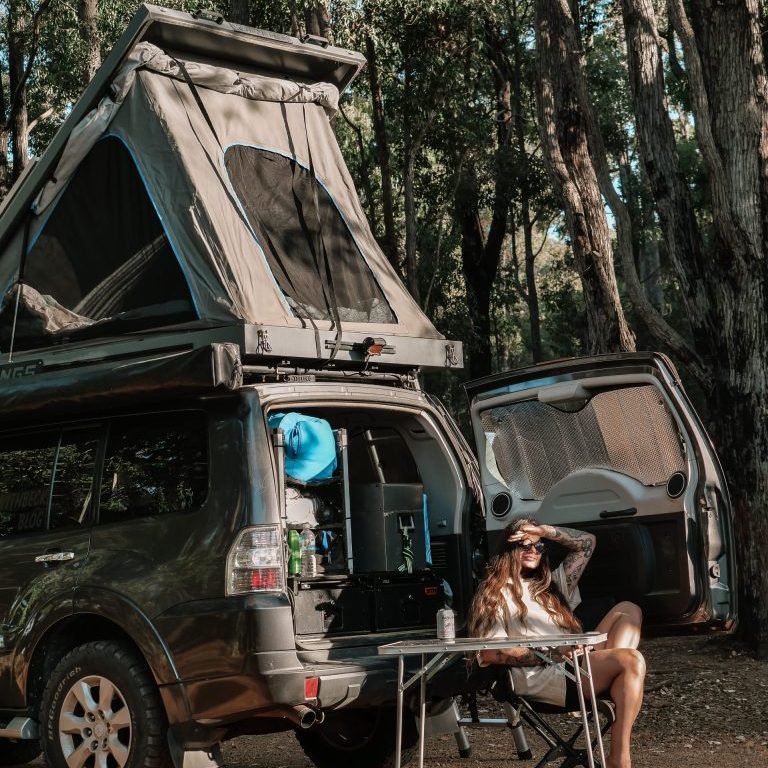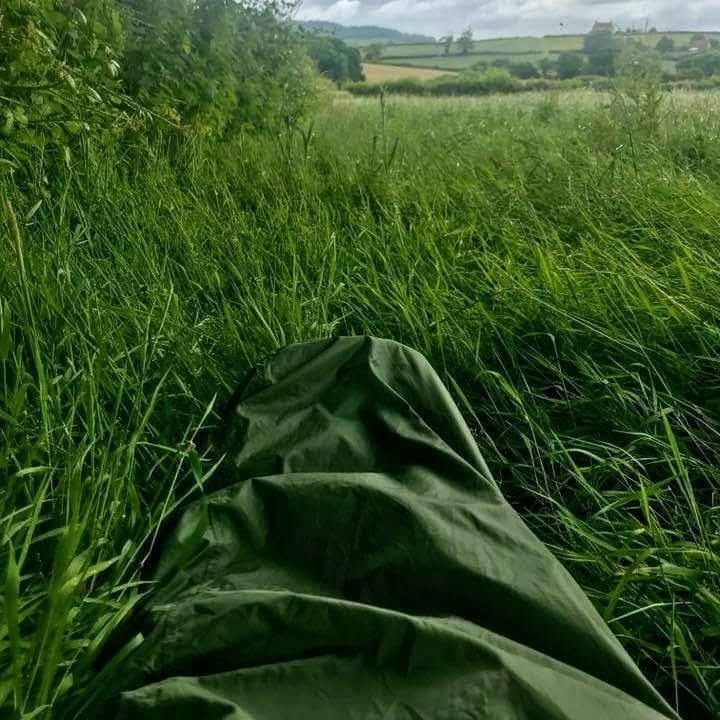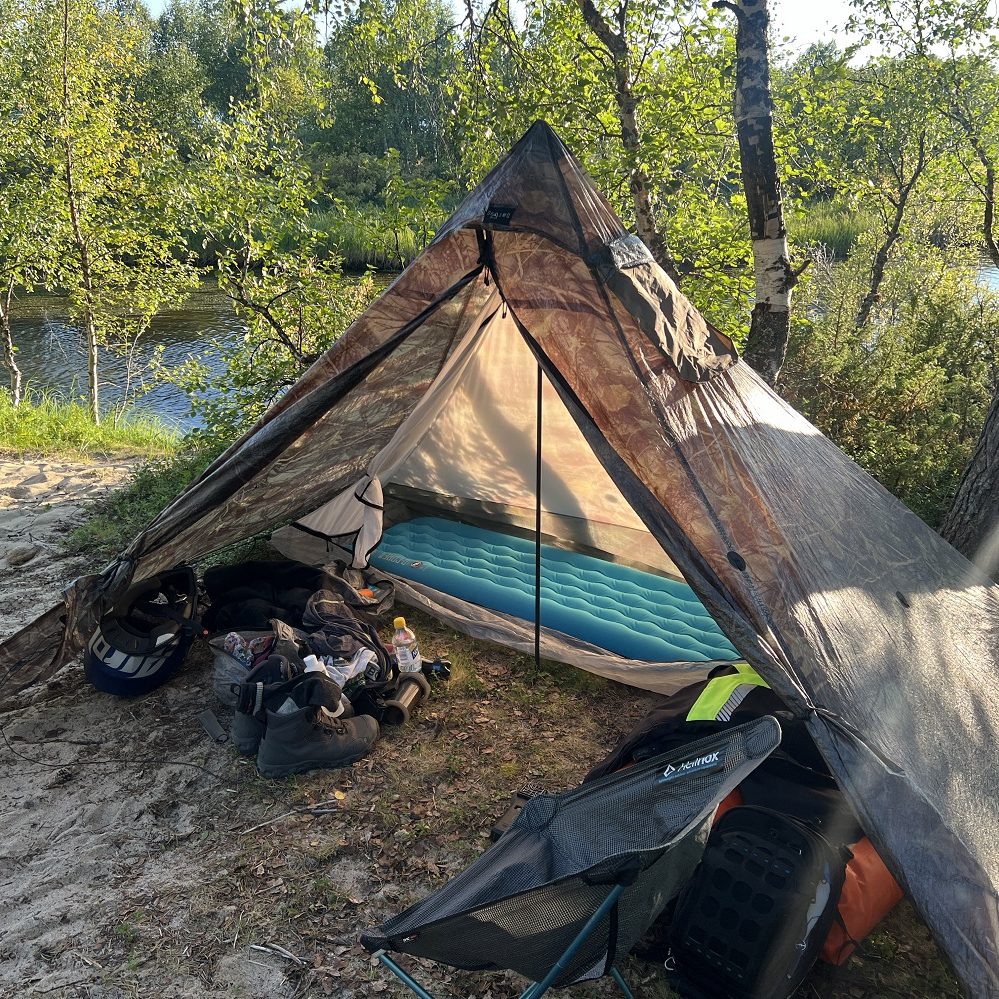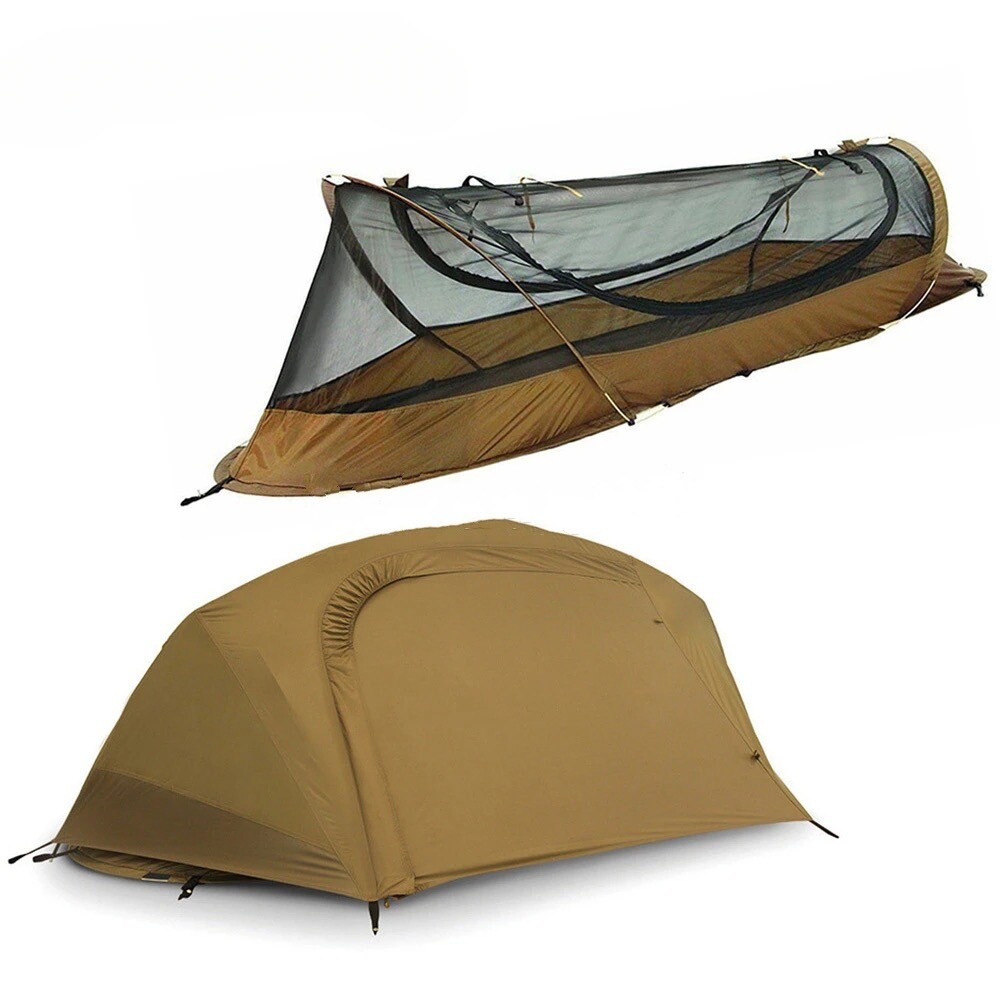What is Stealth Camping?
Definition and Purpose
Stealth camping is a form of outdoor camping that focuses on staying unnoticed. It typically occurs in unconventional or non-designated camping areas. The main goal is privacy, adventure, and blending into the environment. Campers prioritize discretion and avoid drawing attention to their location. This approach allows for unique, off-grid exploration while respecting local surroundings. It often involves minimalist gear and careful planning to ensure a low profile.
Popularity Among Campers
Stealth camping has gained popularity among adventurous individuals seeking freedom and solitude. Many campers enjoy escaping crowded campgrounds and exploring remote locations. It appeals to budget travelers, as it avoids campsite fees. The sense of thrill and self-reliance also attracts nature enthusiasts. Over time, the stealth camping community has grown, sharing tips and techniques for ethical and responsible camping.

Benefits of Stealth Camping
Stealth camping offers numerous advantages that appeal to adventurers and nature lovers alike. These benefits make it an exciting and rewarding way to experience the outdoors.
Adventure and Freedom
Stealth camping gives campers the freedom to explore unconventional and remote places. You are not limited to crowded campsites or popular trails. Every trip becomes an adventure as you discover new locations. This type of camping is ideal for those seeking excitement and spontaneity. It lets you embrace nature in its purest form and enjoy off-grid solitude.
Cost Savings
Camping fees can add up, especially at organized sites or during peak seasons. Stealth camping eliminates those costs, making it budget-friendly. It is perfect for travelers who want to stretch their expenses or avoid high entry fees. By using free, non-designated areas, you can have unique experiences without worrying about additional charges. This makes stealth camping an affordable option for outdoor enthusiasts.
Privacy and Solitude
Stealth camping promotes privacy and personal space. It allows you to escape busy campgrounds filled with noise and crowds. You can immerse yourself in nature without interruptions. Many stealth camping spots offer peace and tranquility, creating a sense of solitude. It’s an ideal choice for those seeking a quiet, uninterrupted connection with the outdoors. This privacy adds to the overall enjoyment of the experience.

Essential Gear for Camping
Having the right gear is crucial for stealth camping. It ensures ease, comfort, and a low-profile setup. Essential items must be practical, lightweight, and tailored for minimalism.
Lightweight and Compact Equipment
Carrying lightweight gear is key. It reduces bulk and simplifies movement in stealth camping. Compact equipment such as foldable utensils, lightweight sleeping bags, and portable water filters are ideal. Multi-purpose tools, like a knife or spork, minimize the need for extra items. Look for gear designed for hikers or backpackers to keep your load manageable. Avoid anything that creates excess noise or requires frequent maintenance.
Reliable Shelter Options
Your shelter should offer protection and blend into the environment. Choose dark-colored tents or tarp setups to avoid detection. Tents with quick setups and compact storage are perfect for stealth camping. Bivy sacks are a great option for solo campers, offering mobility and simplicity. Hammocks with camouflage coloring provide stealth and comfort in forested areas. Always ensure your shelter fits the terrain and looks natural when set up.

Finding the Perfect Camping Spot
Choosing the right spot is key to a successful stealth camping experience. Careful planning and observation can help you stay discreet and safe. Below, you’ll find essential tips to scout for locations and understand legal considerations.
Scouting Locations
Finding a stealth camping spot takes patience and attention to detail. Here are vital steps:
- Look for Remote and Quiet Areas: Choose places away from roads, trails, and populated zones. Remote spots reduce chances of disturbance.
- Blend With Natural Surroundings: Opt for areas with dense vegetation or terrain features to stay hidden. Forests and hills often work best.
- Check Accessibility: Ensure the location is easy to access but hard for others to stumble upon. Avoid places near main routes.
- Survey for Safety: Confirm the site is free of hazards like flooding risks, unstable ground, or dangerous animals.
- Avoid Private Property: Steer clear of areas with signs, fences, or visible ownership. Respect land boundaries.
- Scout Before Dark: Arrive early to properly assess the site and prepare before visibility decreases.
Legal and Ethical Considerations
Understanding and respecting laws and guidelines is crucial. Follow these practices to ensure ethical stealth camping:
- Research Local Regulations: Familiarize yourself with camping laws and restrictions for the area. Ignoring rules can lead to penalties.
- Respect Property Rights: Avoid trespassing on private land or restricted zones. Always seek permission when necessary.
- Choose Public Lands Carefully: National forests and public spaces may allow dispersed camping but check local policies first.
- Practice Ethical Camping: Minimize impact and avoid disturbing local ecosystems. Be a responsible visitor to natural areas.
- Limit Camping Duration: Avoid staying in one spot too long to prevent detection and respect local customs.
- Leave No Trace: Pack out all waste and leave the site as you found it. Preserve its natural beauty for other adventurers.
By choosing your location wisely and adhering to ethical practices, you can enjoy stealth camping responsibly and hassle-free.

Techniques for Remaining Undetected
Stealth camping requires strategies to stay unnoticed and avoid unwanted attention. Being discreet helps you enjoy the experience without disruptions. Focus on two key areas: minimizing noise and light, and using effective camouflage and concealment techniques.
Minimizing Noise and Light
- Control Sound Levels: Speak softly and avoid loud conversations. Keep electronics on silent or vibration mode.
- Use Quiet Equipment: Choose gear that operates silently, such as noiseless cooking stoves or soft-closing bags.
- Set up Quietly: Assemble or disassemble your campsite quietly, especially at night or early morning.
- Reduce Campfire Light: Avoid open campfires at night. Instead, use low-lumen or red-filtered flashlights.
- Stay in Darkness: Turn off all lights once you settle in and don’t use bright screens.
Camouflage and Concealment
- Blend with the Environment: Choose gear and clothing in neutral, earthy tones like green, brown, or gray.
- Hide Your Shelter: Position your tent or tarp out of sight from trails, roads, or populated areas.
- Use Natural Cover: Utilize trees, bushes, or natural landforms to shield your camping spot.
- Minimize Movement: Stay still when you hear nearby people or animals to avoid attracting attention.
- Pack Smartly: Avoid leaving bright or reflective items lying around. Keep your gear packed and organized.
- Avoid Visible Trash: Store or remove trash immediately. Never let it blow around or pile up near your spot.
By mastering these techniques, you can camp stealthily while respecting your surroundings. Staying undetected ensures privacy and enhances the thrill of the experience.
Safety Tips for Camping
Staying safe is essential when stealth camping. Proper preparation and awareness reduce risks. Below are vital tips for managing risks and ensuring emergency preparedness during your adventure.
Managing Risks
- Check Weather Conditions: Always monitor the weather forecast before your trip. Avoid camping during storms or extreme weather.
- Choose a Safe Location: Avoid areas prone to flooding, avalanches, or falling trees. Prioritize stable and dry spots.
- Wildlife Awareness: Research local wildlife and learn how to avoid encounters. Store food securely to deter animals.
- Travel with a Buddy: Whenever possible, camp with a partner for added safety and support.
- Carry Basic Self-Defense Tools: A whistle, pepper spray, or a multi-tool can help in unforeseen situations.
- Avoid Risky Activities: Don’t climb steep areas or cross dangerous terrain to reach a camping spot.
- Stay Discreet: Remaining unnoticed reduces risks of human disturbances or undesirable interactions.
Emergency Preparedness
- Pack a First Aid Kit: Carry essentials like bandages, antiseptics, tweezers, and medications. Know how to use them.
- Emergency Communication: Bring a fully charged phone or a GPS device. Consider a personal locator beacon in remote areas.
- Know Your Surroundings: Familiarize yourself with trails, roads, and emergency exits nearby.
- Have a Backup Plan: Identify alternative camping spots in case your primary choice is unsafe.
- Water and Food Security: Carry enough water and high-energy food. Learn to purify water if needed.
- Stay Visible in Emergencies: Pack a signal mirror, whistle, or emergency blanket to call for help if necessary.
- Trust Your Instincts: If an area feels unsafe, move to a different location.
By managing risks and preparing for emergencies, you can enjoy a safe stealth camping experience. Proper precautions ensure peace of mind and maximize your adventure.

Responsible Practices for Camping
Practicing responsibility during stealth camping ensures environmental care and better relationships with communities. Follow these principles to minimize your impact and camp ethically.
Leave No Trace Principles
Leave No Trace (LNT) is essential for responsible stealth camping. Follow these steps to protect nature:
- Pack Out All Waste: Carry all trash and dispose of it properly in designated areas.
- Minimize Fire Impact: Avoid open fires; use portable stoves instead for cooking needs.
- Stick to Durable Surfaces: Camp only on surfaces that won’t be damaged, like grass or gravel.
- Avoid Altering the Site: Avoid digging holes or clearing vegetation at your campsite.
- Disperse Campsites: Avoid reusing the same spot repeatedly to prevent soil degradation.
- Respect Wildlife: Don’t leave food scraps or interact with animals in their natural habitat.
- Be Quiet: Avoid loud noises to keep the wildlife and environment undisturbed.
By following Leave No Trace principles, you help preserve the beauty of natural spaces for everyone.
Respect for Local Wildlife and Communities
Respecting wildlife and communities ensures stealth camping remains a positive experience. Consider these guidelines:
- Keep Your Distance: Observe wildlife from afar to avoid disturbing their natural behavior.
- Secure Food Properly: Use bear bags or containers to prevent animals from accessing your food.
- Don’t Feed Animals: Feeding disrupts their natural diet and makes them reliant on humans.
- Avoid Private Properties: Steer clear of farms, homes, and fenced areas. Always seek permission if unsure.
- Be Polite to Locals: If residents see you, explain your presence politely and reassure them of your actions.
- Help Maintain the Environment: Pick up litter you find, even if it isn’t yours.
Practicing respect builds trust and ensures continued access to nature for stealth campers. Always act responsibly in areas you visit.
Beginner Tips for Getting Started
Stealth camping can feel overwhelming for beginners. With careful planning and preparation, you can ease into this thrilling activity and enjoy your first adventure. Here are practical tips to help you start your stealth camping journey.
Planning Your First Adventure
- Start Small: Choose a nearby location for your first trip to reduce challenges. Familiar places ease planning stress.
- Research Local Laws: Know camping regulations in the area to avoid legal issues. Focus on public lands or areas where dispersed camping is allowed.
- Pack Minimal Gear: Take only essential items to keep your load light. Prioritize compact, reliable tools like sleeping bags, water filters, and a tarp shelter.
- Practice at Home: Set up your stealth camping gear in your backyard. Familiarity makes outdoor setup easier.
- Study Maps: Plan your route using detailed maps to find potential camping spots. Mark alternative sites for safety.
- Arrive Early: Reach your spot before sunset. Early setup avoids rushing and lets you scout efficiently.
- Carry Snacks and Water: Pack non-perishable food and enough clean water. Test basic meal prep gear beforehand.
- Embrace Simplicity: Start with basic techniques to avoid distractions. Focus on blending into nature and staying unnoticed.
Common Mistakes to Avoid
- Ignoring Regulations: Never camp on restricted or private property. Trespassing leads to penalties or conflicts.
- Carrying Excess Items: Avoid heavy gear or unnecessary tools. Bulky loads can slow movement and draw attention.
- Skipping Site Scouting: Don’t pick a spot hastily. Unscouted areas may be unsafe or unsuitable for camping.
- Leaving Trace Evidence: Ensure your campsite remains clean. Trash or disturbances can annoy communities.
- Being Loud: Limit noises like talking, music, or equipment clatter. Quiet actions create stealth and tranquility.
- Underestimating Wildlife: Research local animals. Learn how to secure food properly to avoid attracting them.
- Disregarding Weather: Be prepared for sudden changes. Carry suitable clothing and waterproof gear for unexpected rain.
- Staying Visible: Don’t use bright lights or colorful tents. Use camouflage tools to remain unnoticed.
By careful planning and avoiding these mistakes, your first stealth camping experience can be rewarding and safe. Stealth camping teaches you adaptability and nurtures your connection to nature.
